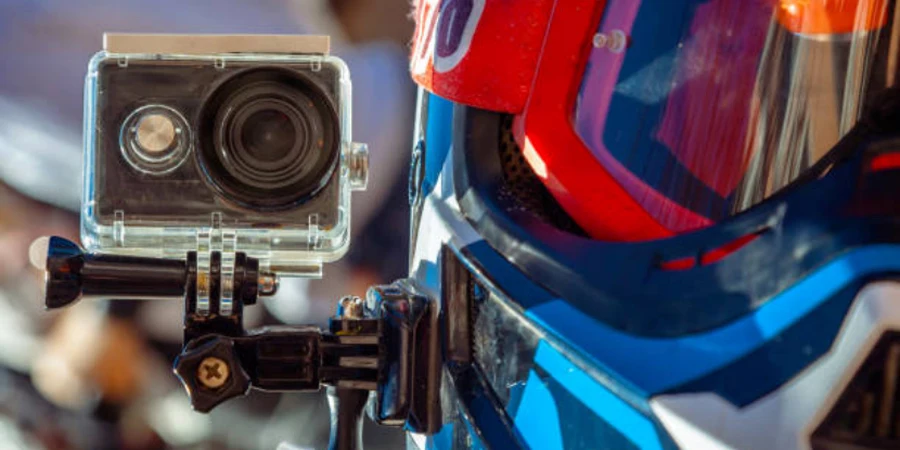In the rapidly advancing world of technology, action and sports cameras in 2024 stand out as pivotal tools for capturing life’s most exhilarating moments with clarity, precision, and ease. These devices, engineered to withstand the rigors of extreme sports and outdoor adventures, offer users the unmatched ability to document their experiences in stunning detail. From breathtaking 8K video capabilities to robust, weather-resistant designs, the latest iterations of these cameras are designed to meet the demands of professionals looking to bring their audience along on every dive, jump, and sprint. With features like advanced image stabilization, high frame rates, and intuitive interfaces, these cameras not only enhance content creation but also elevate the viewing experience, bringing every heartbeat of adventure to the forefront.
Table of Contents
1. Exploring camera world
2. Capturing market dynamics
3. Criteria for camera selection
4. Leading cameras of 2024 and their hallmarks
5. Conclusion
Exploring camera world
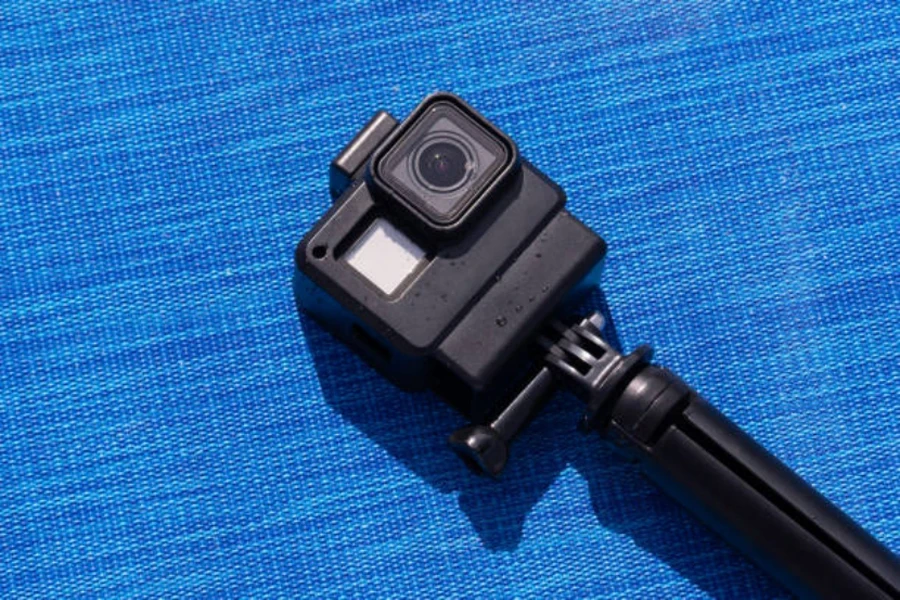
The landscape of action and sports cameras in 2024 is diverse, with technologies evolving to offer an array of options tailored to capturing life’s dynamic moments. From adrenaline-pumping sports to serene outdoor adventures, the choice of camera significantly impacts the quality and perspective of the captured footage.
Categories of action cameras
The landscape of action cameras in 2024 encompasses a wide array of devices designed to capture everything from high-speed sports to immersive landscapes. These cameras are broadly categorized into compact, modular, and 360-degree variants, each tailored for specific user needs and applications.
Compact Action Cameras: Compact action cameras are the quintessential choice for adventurers and sports enthusiasts. Renowned for their rugged, weather-resistant designs, these cameras are built to endure extreme conditions without compromising on portability. Despite their small size, compact action cameras do not skimp on features; they offer high-resolution video recording, advanced image stabilization, and the capability to shoot in varying light conditions. They are the go-to cameras for capturing crisp, smooth footage whether you’re skydiving, scuba diving, or navigating rugged trails.
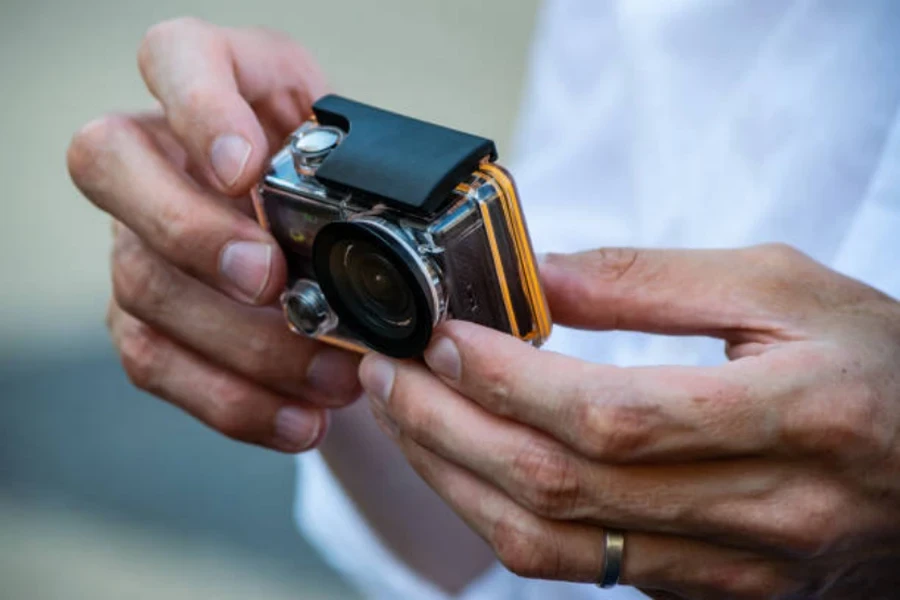
Modular Action Cameras: Modular action cameras present a customizable approach to action photography. These cameras feature a core unit that can be augmented with various modules for different functionalities—be it enhanced audio, additional battery life, or advanced connectivity options for live streaming. This flexibility allows users to tailor their setup to match specific shooting conditions, making modular cameras a versatile option for content creators who require adaptability in their gear.
360-degree Action Cameras: 360-degree action cameras offer an entirely different perspective by capturing spherical video that records every angle of the scene simultaneously. This capability enables viewers to experience the content in a highly immersive way, as if they were physically present in the moment. These cameras use two or more lenses to stitch together a comprehensive view of the surroundings, ideal for virtual reality applications or interactive videos where the audience can navigate the scene. The 360-degree format is particularly favored for its ability to capture dynamic action shots and sprawling landscapes in full glory.
Sports photography cameras explained

The domain of sports photography demands cameras that can capture the fleeting moments of action with clarity and precision. In this realm, the primary contenders are mirrorless and DSLR cameras, each offering unique advantages tailored to the fast-paced nature of sports.
Mirrorless Cameras for Sports Photography: Mirrorless cameras have rapidly gained favor among sports photographers for their compact size, cutting-edge technology, and remarkable speed. The absence of a mirror mechanism allows for a lighter build, making these cameras easier to maneuver and ideal for prolonged shooting sessions. One of the standout features of mirrorless cameras is their ability to shoot at exceptionally high frame rates, enabling the capture of action sequences with breathtaking detail and minimal motion blur. Moreover, these cameras excel in autofocus performance, with systems that offer wide coverage, eye-tracking, and the ability to lock onto fast-moving subjects with impressive accuracy. The electronic viewfinder (EVF) provides real-time previews of exposure, white balance, and depth of field, allowing photographers to make adjustments on the fly. Mirrorless cameras are particularly well-suited for indoor sports and events in low-light conditions, thanks to their superior ISO performance and image stabilization technologies.
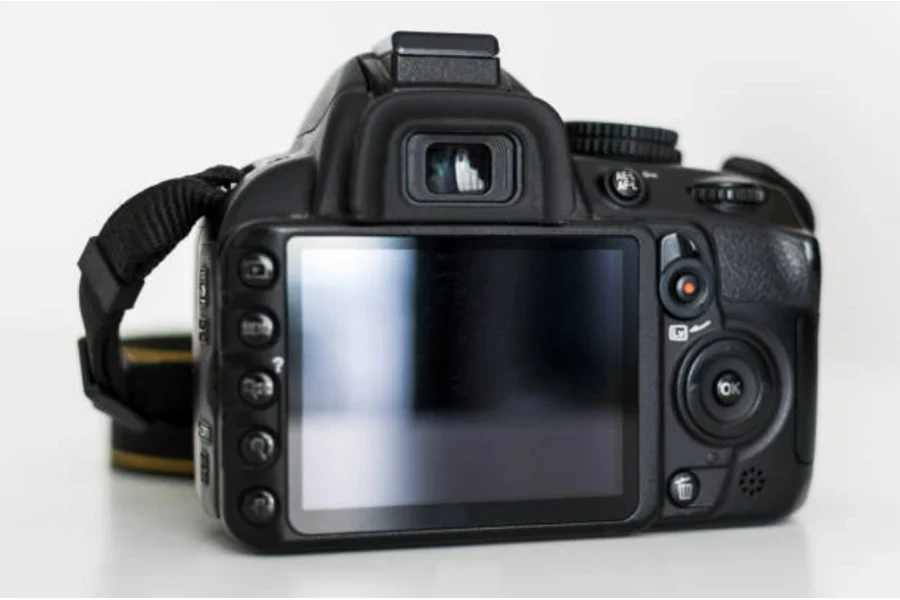
DSLR Cameras for Sports Photography: Despite the surge in popularity of mirrorless systems, DSLR cameras remain a stalwart choice for many sports photographers. The optical viewfinder in DSLRs offers an unimpeded, lag-free view of the action, which some photographers prefer for tracking fast-moving subjects. DSLRs are known for their robust build and long battery life, qualities that are essential for extended shooting sessions and outdoor sports events where changing batteries frequently is impractical. Furthermore, the extensive selection of lenses available for DSLRs, including specialized telephoto and fast prime lenses, provides versatility and creative freedom to capture a wide range of sports. The larger body of DSLRs also contributes to better handling and stability, especially when paired with heavier lenses, which is advantageous for capturing steady shots of high-speed action.
Use Cases and Considerations: The choice between mirrorless and DSLR cameras for sports photography often boils down to specific use cases and personal preferences. Mirrorless cameras are favored for their speed, video capabilities, and performance in challenging light conditions, making them suitable for dynamic sports and venues with variable lighting. On the other hand, DSLRs are chosen for their reliability, optical viewfinder, and access to an extensive lens ecosystem, ideal for outdoor sports, wildlife action shots, and situations requiring long focal lengths. Both types of cameras have evolved to meet the high demands of sports photography, and the decision between them involves weighing factors such as speed, image quality, ergonomics, and the specific requirements of the sport being photographed.
Capturing market dynamics
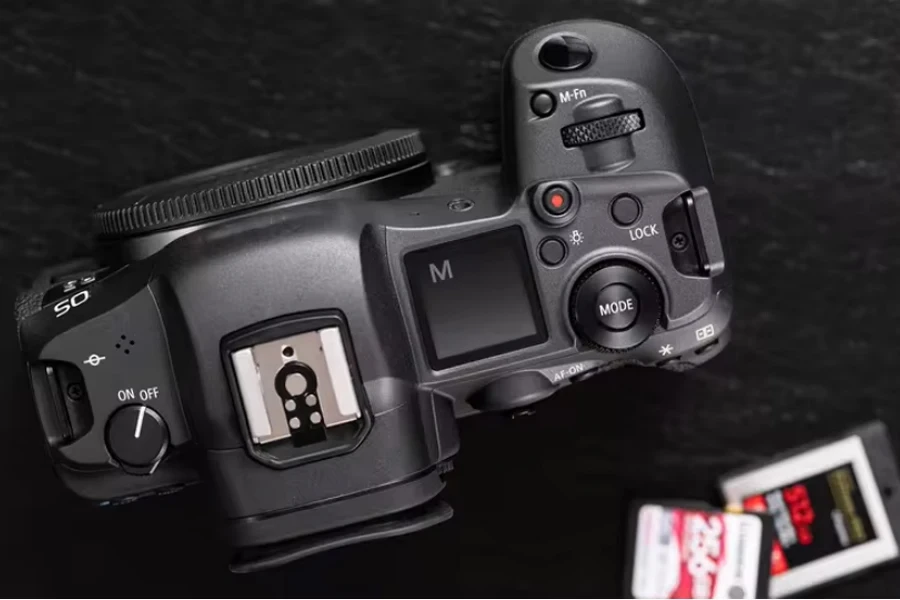
Experts currently value the action camera market at USD 4.41 billion as of 2024 and project it to reach USD 9.18 billion by 2029. This substantial growth is expected to occur at a compound annual growth rate (CAGR) of 15.80% from 2024 to 2029, highlighting the market’s rapid expansion and the increasing popularity of action cameras among consumers worldwide. The surge in demand is driven by the camera’s versatility in capturing high-quality videos in various settings, including extreme sports and adventure activities, making them a favorite for recording first-person perspectives of dynamic experiences.
Recent trends in camera technology
Recent trends in action and sports camera technology have been significantly influenced by advancements in image stabilization, video resolution, and connectivity features. These developments not only enhance the capability of cameras to capture high-quality content but also elevate the user experience by offering more versatility and convenience.
Advancements in Image Stabilization: Image stabilization technology has seen remarkable improvements, evolving to effectively counteract the movement and vibrations associated with action and sports photography. Gyro-based stabilization systems and algorithmic enhancements in software stabilization allow for smoother footage even in the most turbulent conditions. This advancement is crucial for action cameras, as it ensures that high-speed activities and dynamic movements are captured with minimal blur, providing clear and stable video output. For sports photographers, this means being able to shoot from moving vehicles or while in motion themselves without compromising on the quality of the footage.
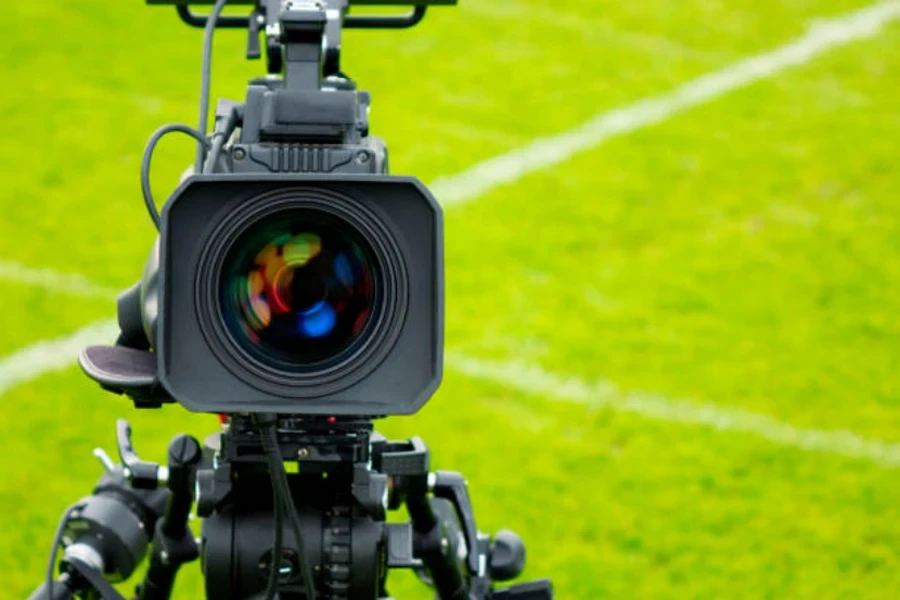
Elevation in Video Resolution: The push towards higher video resolutions continues to be a defining trend in camera technology. 4K has become a standard expectation, with leading models pushing the boundaries further into 5.3K, 8K, and even beyond. This leap in resolution not only allows for breathtaking detail and clarity but also offers post-production flexibility such as cropping and zooming without a significant loss in quality. High-resolution capabilities are particularly beneficial in sports photography, where capturing the minutiae of a moment can make a substantial difference in the final output.
Enhancements in Connectivity Features: Connectivity has become a pivotal feature in action and sports cameras, with Wi-Fi and Bluetooth integrations becoming more sophisticated. These features facilitate seamless transfer of footage to smartphones and computers, enabling quick editing and sharing. Additionally, some cameras now support live streaming, allowing content creators and sports enthusiasts to broadcast their adventures and events in real-time to a global audience. This instantaneity and ease of sharing have transformed how action and sports content is consumed and distributed, making it more accessible to a wider audience.
Consumer preferences shaping the market

Consumer preferences are significantly shaping the market for action and sports cameras, with demands for higher resolutions, better low-light performance, and enhanced portability driving the evolution of these devices. These preferences reflect a broader desire among users for cameras that can deliver professional-quality results in a variety of settings and situations, emphasizing the importance of adaptability and quality in today’s camera technology.
Demand for Higher Resolutions: There’s a growing expectation for ultra-high-definition video capabilities, with consumers seeking resolutions that go beyond the standard 1080p HD. The push for 4K, 5.3K, and even 8K resolutions is indicative of a market that values crisp, detailed imagery that can capture the essence of fast-paced action and the nuances of sports events with exceptional clarity. This demand for higher resolutions is not just about achieving superior image quality; it’s also about enabling creative flexibility in post-production, where cropping or zooming into footage without a significant loss in detail can make a substantial difference in content creation.
Better Low-Light Performance: The ability to shoot clear, noise-free footage in low-light conditions is another critical consumer demand. Action and sports events often occur in less-than-ideal lighting conditions, from indoor arenas to underwater environments and nighttime settings. Cameras that offer larger sensors, advanced image processing algorithms, and fast aperture lenses are increasingly sought after, as they can significantly improve low-light performance. This capability ensures that users can capture vibrant and detailed content regardless of the lighting conditions, making it a key factor in consumer decision-making.
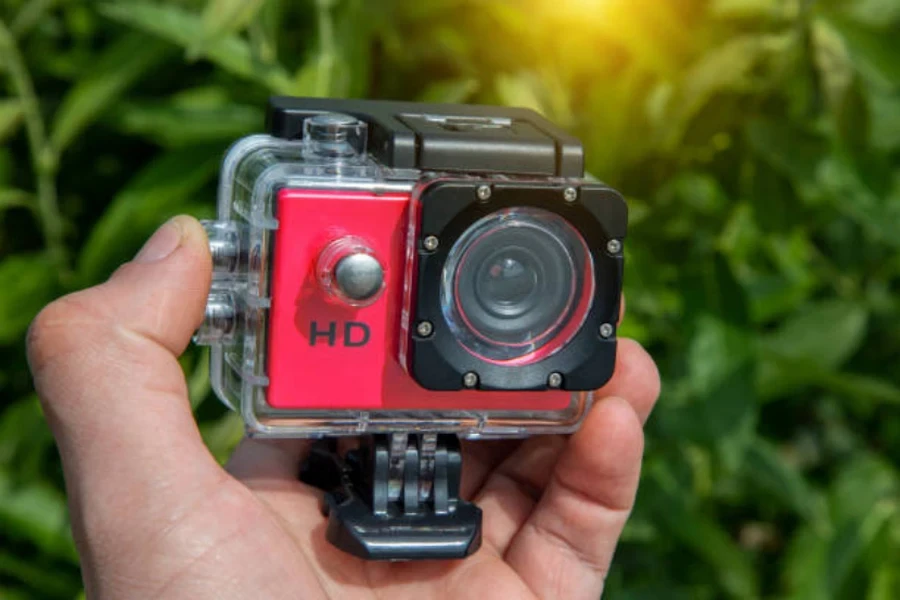
Enhanced Portability: As action and sports photography often involves movement and travel, consumers are gravitating towards cameras that offer high performance in compact and lightweight designs. Portability is a crucial consideration, with a preference for cameras that can easily fit into a pocket or be mounted on equipment without adding significant weight or bulk. Additionally, durability and weather resistance are important attributes, as cameras need to withstand the elements and the rigors of active use. The demand for portability, coupled with robustness, reflects a consumer desire for cameras that are not only easy to carry but also reliable in various environmental conditions.
These trends reflect a dynamic market where the convergence of technological innovation and consumer demand continues to push the boundaries of what action and sports cameras can achieve. Manufacturers are responding with devices that offer not just improvements in image quality and performance, but also in how these devices fit into the active lifestyles of their users.
Criteria for camera selection
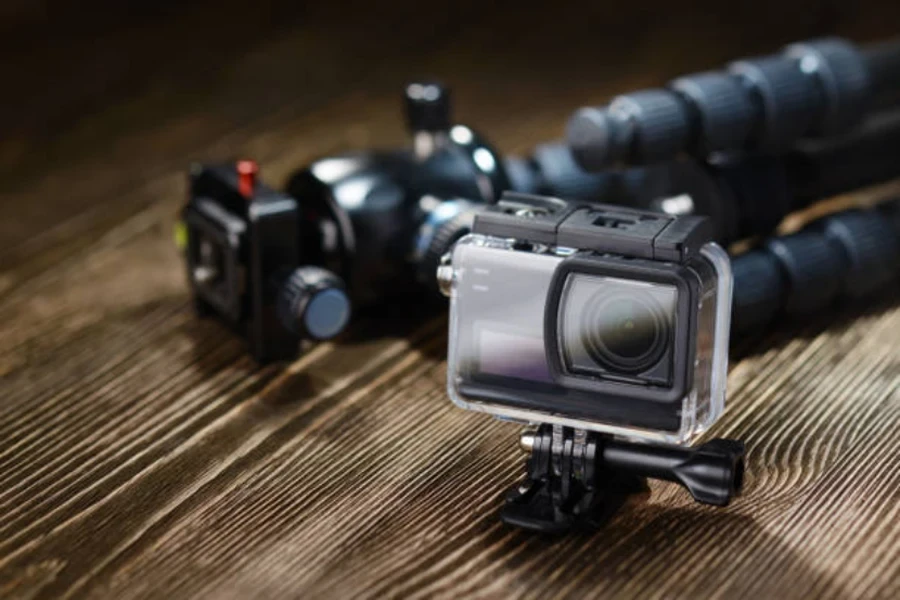
When selecting action and sports cameras, evaluating performance features and assessing durability and versatility are critical considerations that influence decision-making. These criteria ensure that the chosen device meets the high demands of capturing action-packed moments with precision and resilience.
Evaluating performance and features
Selecting the right action and sports cameras requires meticulous consideration of specific performance features to ensure they meet the dynamic needs of capturing high-speed and high-quality content. The essential factors to examine include video and photo resolution, frame rates, autofocus capabilities, and battery life, each playing a pivotal role in the camera’s overall performance.
Video and Photo Resolution: Resolution is a cornerstone feature, determining the clarity and detail of the footage. Modern action cameras now offer resolutions from 1080p (Full HD) up to 5.3K, and in some cases, even 8K for cutting-edge models like the Insta360 Ace Pro. For instance, the GoPro Hero 12 Black impresses with its ability to shoot 5.3K video at 60 frames per second (fps), providing users with incredibly crisp visuals that can capture the minutest details of fast-moving action. High resolution not only improves the viewing experience but also grants more flexibility in post-production processes like cropping and zooming, enabling content creators to refine their shots without a significant loss in quality.

Frame Rates: Frame rates directly influence the smoothness of video playback and the camera’s capacity for slow-motion footage. High frame rates, such as 120fps or 240fps, available in resolutions up to 1080p in devices like the GoPro Hero 12 Black, allow for the creation of smooth, slow-motion effects that can dramatize moments of action. This feature is invaluable in sports photography and videography, where capturing every detail of movement is essential.
Autofocus Capabilities: Autofocus capabilities are critical in ensuring that fast-moving subjects remain in sharp focus. Advanced autofocus systems, equipped with features like real-time eye-tracking and phase-detection, enable the camera to lock onto subjects quickly and accurately, a feature particularly beneficial in unpredictable and fast-paced environments. Cameras with sophisticated autofocus systems can significantly enhance the quality of action shots, ensuring that every frame is as clear and defined as possible.
Battery Life: Battery life determines the camera’s operational longevity on a single charge—a crucial aspect for extended shooting sessions. Action cameras like the GoPro Hero 12 Black offer a battery life that can sustain several hours of continuous shooting, although this can vary based on the resolution and frame rate used. Longer battery life is essential for adventurers and sports enthusiasts who spend extended periods in the field, away from power sources. Cameras with interchangeable batteries or those supporting power banks via USB charging offer additional flexibility for prolonged use.
By examining these key features—resolution, frame rates, autofocus capabilities, and battery life—buyers can make informed decisions when selecting an action or sports camera. The right combination of these features ensures that the camera not only captures the essence and thrill of action-packed moments but also offers the usability and flexibility needed for diverse shooting conditions and creative demands.
Assessing durability and versatility
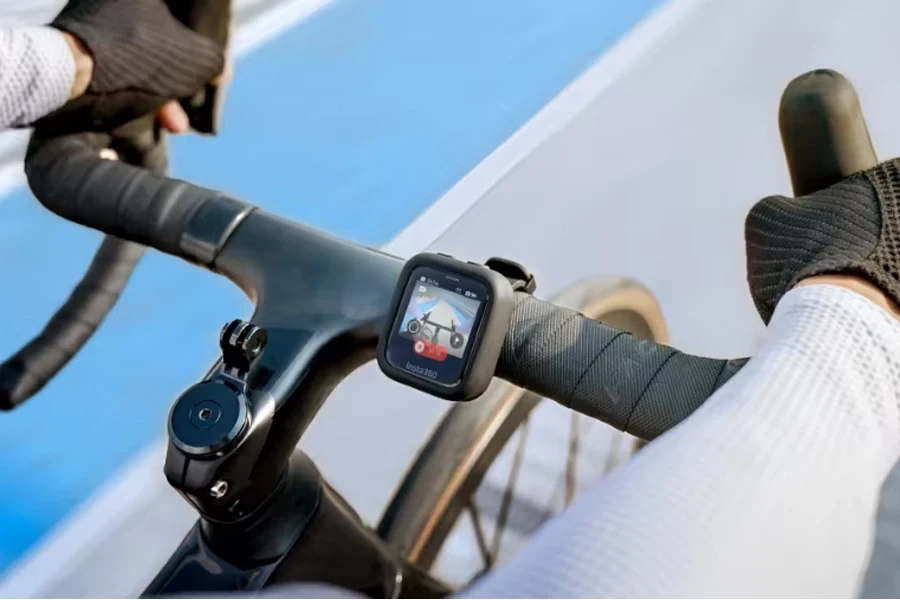
In selecting the right action and sports cameras, assessing durability and versatility is as critical as evaluating performance features. These aspects ensure the camera can withstand the rigors of outdoor activities and adapt to various shooting environments and needs.
Build Quality: Durability starts with the camera’s build quality, which dictates its ability to endure physical impacts, dust, and moisture. Cameras constructed with rugged, high-quality materials like reinforced polycarbonate bodies are designed to survive drops and knocks. For instance, the Olympus Tough TG-6 is a testament to superior build quality, being shockproof from falls up to 2.1 meters, crushproof up to 100 kgf, and dustproof. This level of durability is essential for users who engage in extreme sports or adventurous activities where the camera is exposed to rough handling and harsh environmental conditions.
Waterproofing: Waterproofing is another pivotal feature, particularly for cameras used in water sports or adverse weather conditions. The degree of waterproofing varies significantly across models. Some cameras, like the GoPro Hero 12 Black, are inherently waterproof up to 10 meters without the need for an external housing, making them ideal for snorkeling, surfing, or swimming. Others may require additional protective cases to achieve a similar level of water resistance. The depth to which a camera can be submerged without compromising its functionality is a vital consideration for underwater photographers and adventurers.

Compatibility with Accessories: Versatility is greatly enhanced by a camera’s compatibility with a wide range of accessories, which can transform its usability across different activities. Mounts, harnesses, and extendable poles allow for varied shooting perspectives, from first-person views to aerial shots. For example, the modular design of cameras like the Insta360 Go 3 expands its functionality through additional modules, such as an Action Pod that adds a flip-out touchscreen, making it more versatile for vlogging or selfies. Similarly, compatibility with external microphones can improve audio quality for content creators who require clear sound to accompany their visuals.
The combination of robust build quality, effective waterproofing, and broad accessory compatibility ensures that an action or sports camera is not only durable enough to withstand challenging environments but also versatile enough to cater to diverse shooting needs. These factors are indispensable for users seeking a reliable camera that can accompany them on their adventures, capture high-quality content, and offer the flexibility to adapt to various scenarios and requirements.
Leading cameras of 2024 and their hallmarks
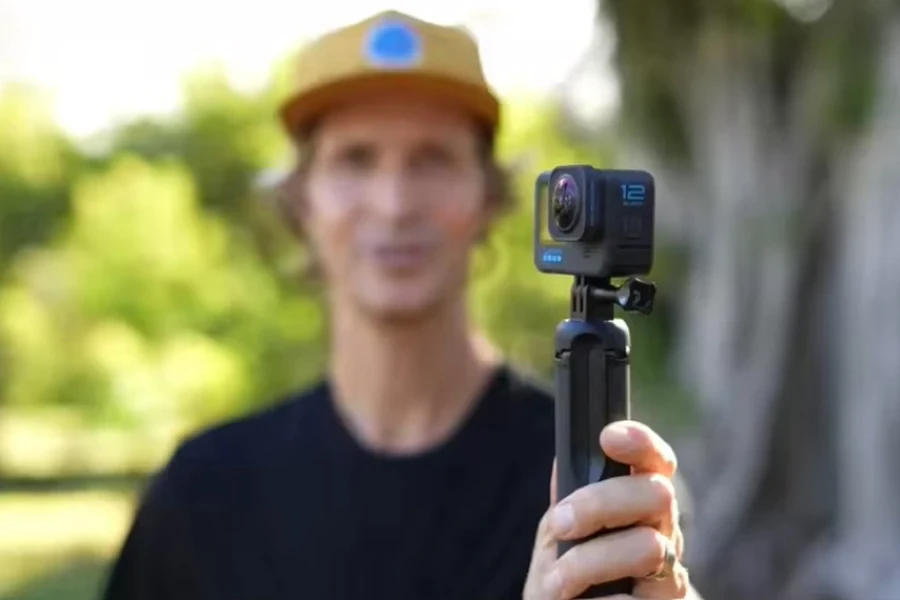
In the evolving landscape of photography and videography, certain models of action and sports cameras have distinguished themselves as leaders in 2024. These cameras, celebrated for their innovative features and unparalleled performance, set new standards in capturing the essence of action and sports.
Action camera innovators
GoPro Hero12 Black: The GoPro Hero12 Black stands at the pinnacle of action camera technology in 2024, continuing GoPro’s legacy of delivering cutting-edge features wrapped in a rugged, portable package. With its ability to shoot 5.3K video at 60 frames per second (fps), 4K at 120fps, and 2.7K at 240fps, it ensures that every detail of action-packed moments is captured with crystal-clear clarity. The Hero12 Black also introduces HDR video capture at 5.3K30 and 4K60, enhancing scenes with mixed lighting to produce videos with richer details and more vibrant colors. Furthermore, its 27MP sensor captures stunning photos, ensuring that users can freeze their adventures in time with high-quality imagery.
One of the Hero12 Black’s most lauded features is its class-leading video stabilization, which allows users to record silky smooth footage even in the most turbulent conditions. The camera’s rugged build and waterproof design, capable of withstanding depths up to 33 feet without a case, make it an ideal companion for everything from surfing to snowboarding. The inclusion of front and rear displays enhances its usability, allowing for easy framing from any angle. With a battery life designed to last through your adventures and a suite of connectivity options for easy sharing, the GoPro Hero12 Black is engineered to be as versatile as the individuals who use it.

Insta360 Ace Pro: The Insta360 Ace Pro emerges as a trailblazer in the action camera space, especially for enthusiasts chasing the highest video resolution possible in the most compact form factor. It stands out by offering 8K video recording, a first for action cameras, providing filmmakers with unparalleled detail and clarity for their dynamic shots. This capability is complemented by a 48MP sensor for capturing sharp, high-resolution stills. The Ace Pro’s design incorporates a versatile flip-up screen, enhancing its usability for vloggers and action enthusiasts alike who need a reliable viewfinder from any angle. Its durable build and waterproof capabilities ensure that it can accompany adventurers on their most extreme escapades without faltering.
Beyond its impressive hardware, the Insta360 Ace Pro is equipped with sophisticated image stabilization and AI-driven shooting modes, enabling users to capture smooth and captivating footage regardless of the action’s intensity. Its Active HDR mode ensures that videos maintain detail and color accuracy in varied lighting conditions, from the brightest daylight to dim interiors. The camera’s modular design also allows for easy accessory attachment, expanding its functionality for different shooting scenarios. For creators who prioritize cutting-edge resolution and innovative features in a durable package, the Insta360 Ace Pro is an unmatched choice.
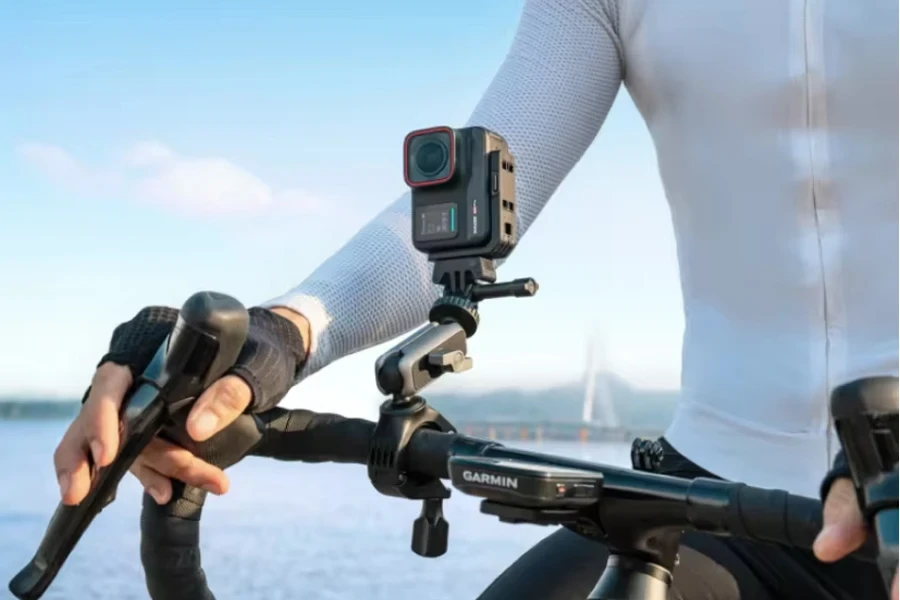
Canon EOS R3: The Canon EOS R3 is a powerhouse in the realm of sports photography, tailor-made for professionals who demand lightning-fast autofocus and unparalleled shooting speeds. With a 24.1MP full-frame sensor at its heart, the R3 is capable of capturing up to 30 frames per second in RAW format, ensuring no moment is missed in the fast-paced world of sports. Its revolutionary Eye Control Autofocus system allows photographers to intuitively select focus points with just their gaze, a feature that significantly enhances shooting efficiency and accuracy. The camera’s robust build is designed to withstand the rigors of professional use, making it both weather-sealed and durable. Additionally, the R3’s 6K RAW video capability offers filmmakers and content creators exceptional video quality, making it a versatile tool for both still photography and cinematic projects.
DJI Osmo Action 4: The DJI Osmo Action 4 is designed to be a formidable competitor to the GoPro series, offering users a blend of durability, high-quality video capture, and innovative features. Boasting a 1/1.7-inch sensor, this action camera can record up to 4K resolution at 120fps, providing stunning slow-motion footage. Its dual-screen setup enables easy framing from both the front and back, enhancing its appeal for vloggers and selfie enthusiasts. The Action 4’s RockSteady 2.0 stabilization technology ensures smooth, shake-free videos, regardless of the action’s intensity. Waterproof up to 16 meters without a housing, this camera is ready for any adventure, from deep-sea diving to mountain biking in muddy conditions.
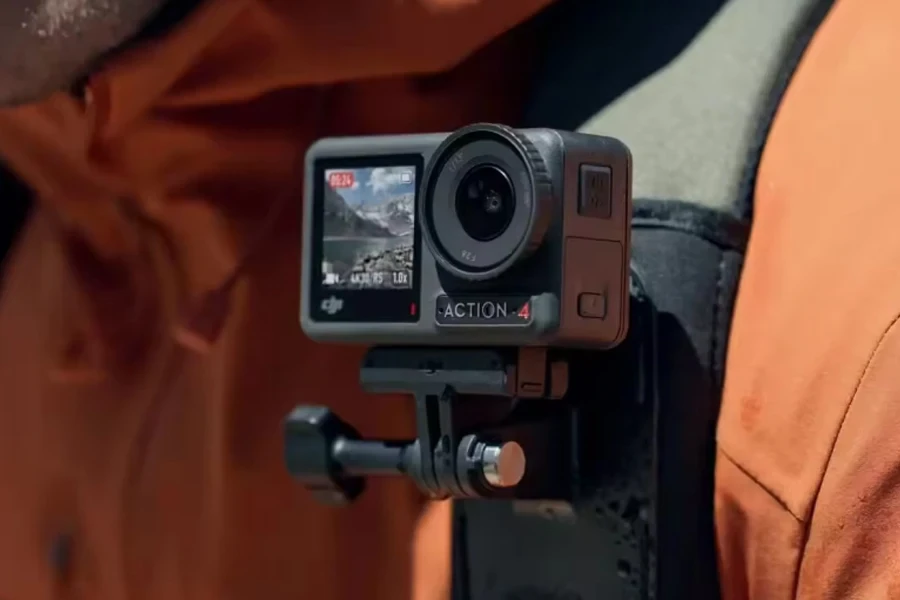
Champions in sports photography
Nikon Z9: The Nikon Z9 is heralded as the best overall camera for sports photography in 2024, boasting an impeccable blend of speed, resolution, and durability. This mirrorless powerhouse features a full-frame sensor capable of capturing images at 47.5MP and video at up to 8K, ensuring breathtaking detail and depth in every shot. Its standout feature, however, is its unparalleled continuous shooting speed of 120fps at 11MP, combined with a buffer that can handle up to 1,000 images per burst. This makes the Z9 an unrivaled choice for capturing every millisecond of high-speed sports action. Additionally, Nikon has integrated state-of-the-art autofocus technology that tracks subjects with precision, ensuring that every frame is as sharp as possible.
Beyond its technical capabilities, the Nikon Z9 distinguishes itself with a robust build quality designed to withstand the rigors of professional sports photography. Its weather-sealed body offers protection against the elements, making it suitable for shooting in any environment. The camera’s ergonomic design, featuring a built-in vertical grip, enhances handling and battery life, crucial for long shooting sessions. The Z9’s versatility extends to its video capabilities, with 8K recording offering filmmakers and content creators stunning visual quality. With these features, the Nikon Z9 positions itself as the go-to camera for professionals demanding the best in speed, resolution, and reliability.
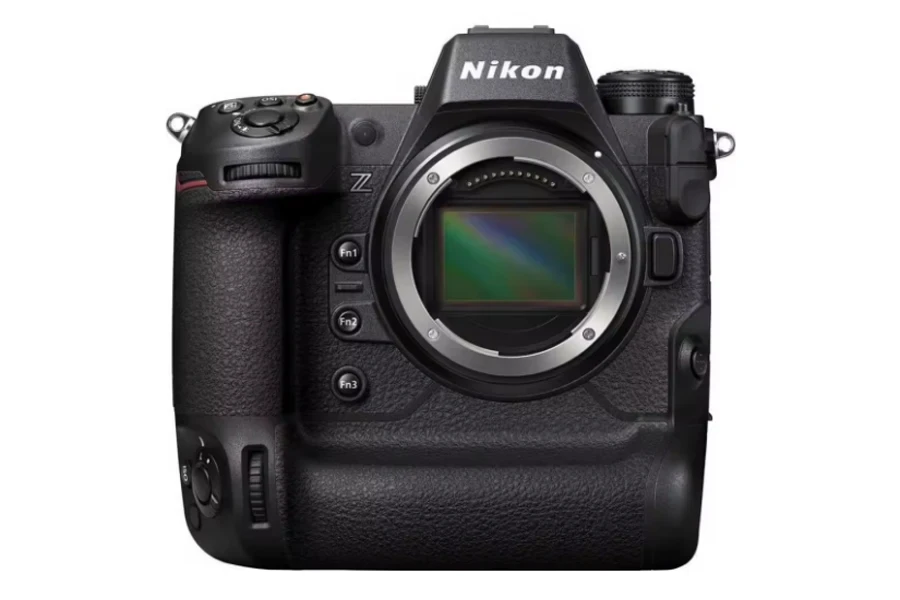
Sony A9 II: The Sony A9 II caters to the needs of sports photographers looking for a blend of high speed, detailed resolution, and robust build quality at a relatively affordable price point. With its 24.2MP full-frame sensor, the A9 II captures vibrant and detailed images, ensuring that every moment of action is preserved with precision. It shines particularly bright in its continuous shooting capability, achieving speeds of up to 20fps with no blackout, allowing photographers to keep their eyes on the subject without interruption. This feature, coupled with Sony’s acclaimed autofocus system, which includes real-time eye autofocus for both humans and animals, ensures that the A9 II can track fast-moving subjects with unwavering accuracy.
The A9 II’s design emphasizes durability and usability, featuring a weather-sealed body that stands up to challenging shooting conditions, making it a reliable tool for sports photographers working in various environments. Its compact size, compared to traditional DSLR cameras, offers greater portability without sacrificing the ergonomic benefits of a full-frame camera. Sony’s commitment to connectivity is evident in the A9 II’s advanced wireless capabilities, which streamline the workflow for professionals needing to transfer images quickly during events. For sports photographers and action enthusiasts who demand a camera that combines speed, precision, and connectivity, the Sony A9 II presents a compelling option that balances performance with value.
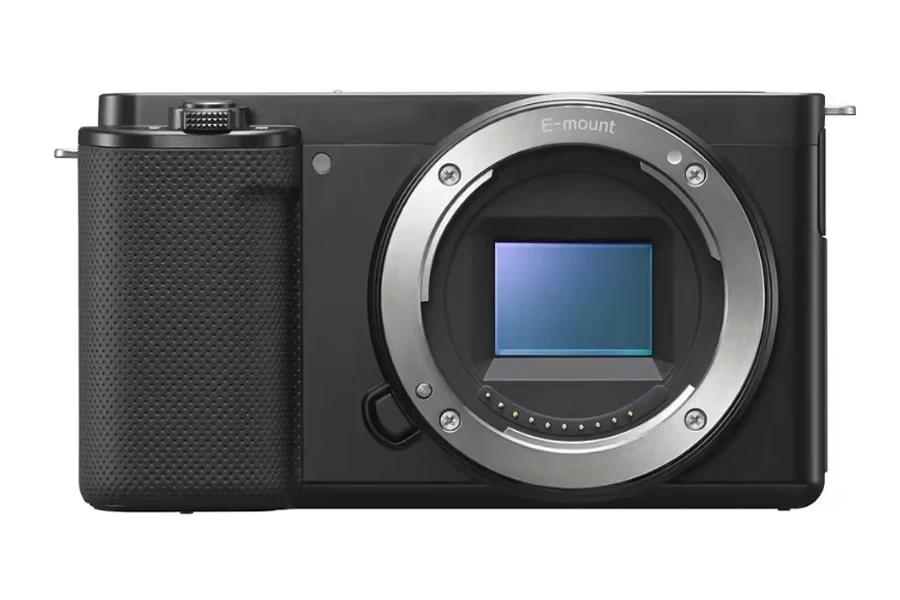
Akaso Brave 7 LE: The Akaso Brave 7 LE is an affordable entry into the action camera market, offering features typically found in higher-end models without the steep price tag. It boasts dual screens for easy framing and selfie shots, 4K video recording at 30fps, and electronic image stabilization to reduce camera shake. The Brave 7 LE’s IPX7 rating ensures it can handle adverse weather conditions, making it a great companion for outdoor enthusiasts on a budget. Despite its lower price point, the camera doesn’t skimp on quality, delivering crisp, vibrant footage suitable for capturing a wide range of activities. With its value-oriented proposition, the Akaso Brave 7 LE is an excellent choice for those looking to document their adventures without breaking the bank.
Olympus Tough TG-6: The Olympus Tough TG-6 is a compact action camera that doesn’t compromise on durability or image quality. Designed to survive in the harshest environments, it’s waterproof up to 15 meters, crushproof up to 100kg, freeze-proof, and shockproof, making it an indestructible companion for extreme adventurers. The TG-6 captures high-quality images with its 12MP sensor and offers 4K video recording capabilities, ensuring that both photos and videos are vivid and detailed. Its microscope mode stands out for close-up shots, revealing the minute details of the natural world. For those who brave the elements and demand a camera that can keep up, the Olympus Tough TG-6 proves to be an exceptional choice, offering both resilience and performance in a compact form.

These leading models exemplify the pinnacle of current camera technology, offering users a blend of high-resolution imaging, advanced stabilization, and versatility in design. Whether it’s for professional sports photography, action-packed adventures, or content creation, these cameras deliver superior performance that can meet and exceed the rigorous demands of their users. Their hallmarks not only set them apart in the market but also define the standards to which future cameras will aspire.
Conclusion
Selecting the best action and sports cameras in 2024 requires a balanced consideration of performance, durability, and the latest technological advancements. From the high-resolution capabilities of the GoPro Hero12 Black and Insta360 Ace Pro to the superior autofocus and speed of the Nikon Z9 and Sony A9 II, the market offers a range of options tailored to the diverse needs of content creators and sports photographers. Informed decision-making, guided by an understanding of these key features and market trends, enables professionals to choose cameras that not only capture the essence of their adventures and sporting events but also stand the test of time in the rapidly evolving landscape of photography and videography.
